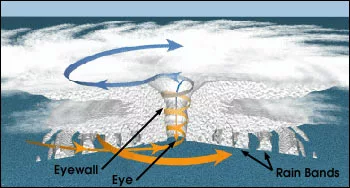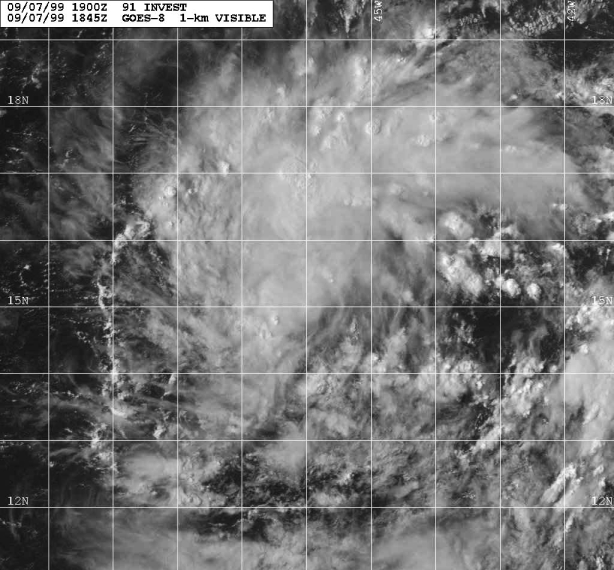








| CATEGORY | MAX SUSTAINED SFC WINDS [in kts (mph)] |
STORM SURGE [in m (ft)] |
MSLP [in mb ("Hg)] |
| Tropical Depression | <35 (<40) | - | - |
| Tropical Storm | 35-63 (40-73) | - | - |
| CAT 1 | 64-82 (74-95) | 1.2-1.5 (4-5) | >980 (>28.94) |
| Damage primarily to shrubbery, trees, foliage, and unanchored mobile homes. No real damage to other structures. Some damage to poorly constructed signs. Low-lying coastal roads inundated, minor pier damage, some small craft in exposed anchorages torn from moorings. | |||
| CAT 2 | 83-95 (96-110) | 1.8-2.4 (6-8) | 965-979 (28.50-28.91) |
| Considerable damage to shrubbery and tree foliage, some trees blown down. Major damage to exposed mobile homes. Extensive damage to poorly constructed signs. Some damage to roofing materials of buildings; some window and door damage. No major damage to buildings. Coastal roads and low-lying escape routes inland cut by rising water 2-4 hours before arrival of hurricane center. Considerable damage to piers. Marinas flooded. Small craft in unprotected anchorages torn from moorings. Evacuation of some shoreline residences and low-lying island areas required. | |||
| CAT 3 | 96-113 (111-130) | 2.7-3.7 (9-12) | 945-964 (27.91-28.47) |
| Foliage torn from trees, large trees blown down. Practically all poorly constructed signs blown down. Some damage to roofing materials of buildings; some window and door damage. Some structural damage to small buildings. Serious flooding at coast and many smaller structures near coast destroyed; larger structures near coast damaged by battering waves and floating debris. Low-lying escape routes inland cut by rising water 3-5 hours before hurricane center arrives. Flat terrain 5 feet or less above sea level flooded inland 8 miles or more. Evacuation of low-lying residences within several blocks of shoreline possibly required. | |||
| CAT 4 | 114-134 (131-154) | 4.0-5.5 (13-18) | 920-944 (27.17-27.88) |
| Shrubs and trees blown down, all signs down. Extensive damage to roofing materials, windows, and doors. Complete failure of roofs on many small residences. Complete destruction of mobile homes. Flat terrain 10 feet or less above sea level flooded inland as far as 6 miles. Major damage to lower floors of structures near shore due to flooding and battering by waves and floating debris. Low-lying escape routes inland cut by rising water 3-5 hours before hurricane center arrives. Major erosion of beaches. Massive evacuation of all residences within 500 yards of shore possibly required, and of single-story residences on low ground within 2 miles of shore. | |||
| CAT 5 | >134 (>154) | >5.5 (>18) | <920 (<27.16) |
| Shrubs and trees blown down, considerable damage to roofs and buildings; all signs down. Very severe and extensive damage to windows and doors. Complete failure of roofs on many residences and industrial buildings. Extensive shattering of glass in windows and doors. Some complete building failures. Small buildings overturned or blown away. Complete destruction of mobile homes. Major damage to lower floors of all structures less than 15 feet above sea level within 500 yards of shore. Low-lying escape routes inland cut by rising water 3-5 hours before hurricane center arrives. Massive evacuation of residential areas on low ground within 5-10 miles of shore possibly required. | |||